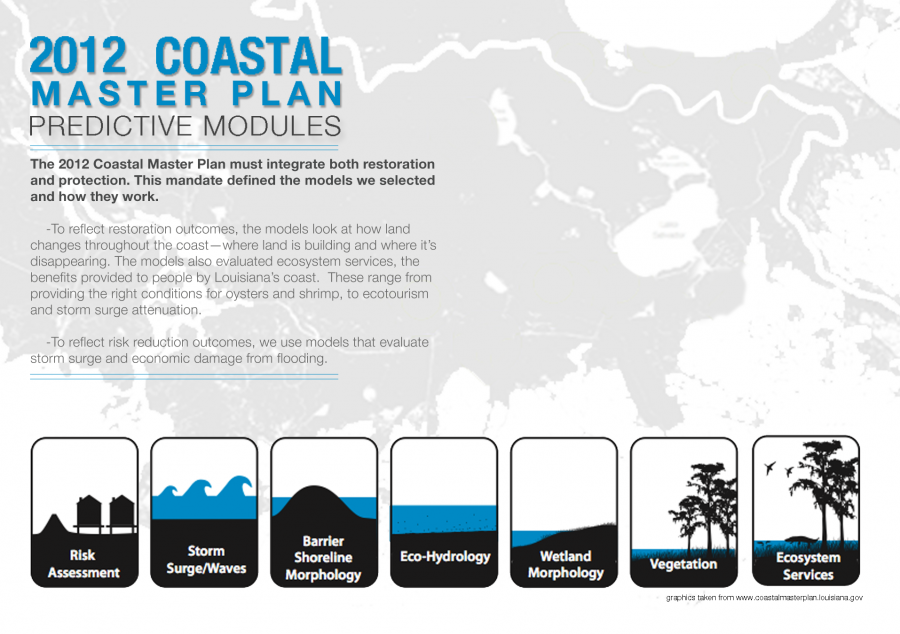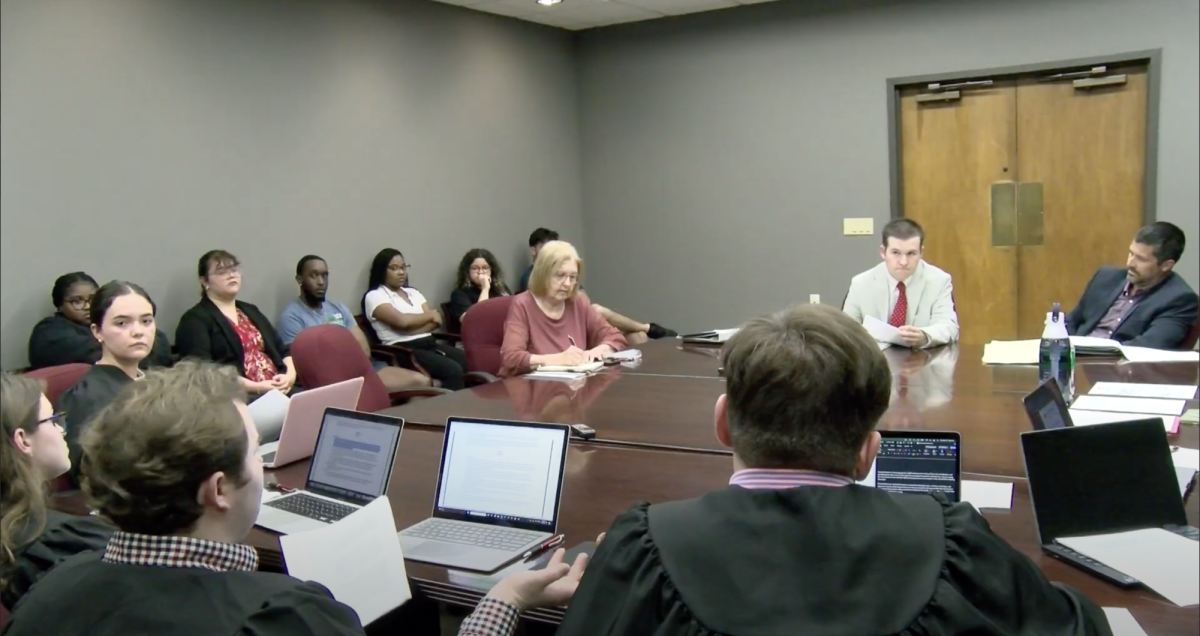After the revealing of the 2012 Coastal Restoration Master Plan last month, protecting the Louisiana coast has become the trending topic in the area.
The 50-year, $50 billion plan is currently in the drafting stage, and the Coastal Protection and Restoration Authority is accepting public commentary until Feb. 25 before the final plan is written and submitted to the Louisiana State Legislature on March 26.
The CPRA held several public hearings during the month of January, giving members of various communities an opportunity to voice opinions about the new plan. Since its revealing, citizens have had mixed feelings about the plan.
“Every five years, they have to come up with a new state Master Plan,” Kerry St. Pé, program director of the Barataria-Terrebone National Estuary Program, said. “This plan falls short. It falls very short.”
St. Pé explained that in order to be successful at restoration, an agreement needs to be reached between the people creating the plan and the people who would be affected by the restoration area.
“You can take the planning effort and say that it’s all based on science, but you have to pass it through another lens of public acceptability by the people that live here,” St. Pé said. “That is where this plan fell short. They did not pass it through what these people living here are willing to accept. They did nothing like that.”
According to St. Pé, the new Master Plan lies upon massive water diversions to restore the area, and although the Mississippi River may have built this area long ago, it took 7,000 years to do so. At that time, the Mississippi River had twice the amount of sediment suspended in the water than it does today.
“Do the math,” St. Pé said. “How long would it take to restore us, 14,000 years? That might be perfectly acceptable to people not living here, but to us, the people that live here and the people that were raised here, that is unacceptable.”
St. Pé said that the best way to restore the coast would be to harvest the sediment from the bottom of the Mississippi River through the use of dredges along with smaller sized water diversions, because it would restore the coast without changing the entire path of the river, allowing people to still live here.
“I think it is the only alternative,” St. Pé said. “I don’t think the government is ready to pay everybody to move to Kansas while we fix the coast. I don’t think that it is realistic to believe that the people will accept being told they have to move out of this area. I just don’t think it’s possible.”
Gary LaFleur, associate professor of biology, described the eroding coastline as a hospital patient.
“We think about a human being and what causes a disease and then how you have to treat that disease in order to get healthy again,” LaFleur said. “On one hand, the patient is still beautiful, like the area still has beautiful cypress forests and marshes, but it is impaired.”
LaFleur used an analogy of a cancer patient having to take chemotherapy to explain some of the flaws in the new plan.
“It makes them sick at first, but the whole idea is that in the long run, they will get better,” LaFleur said. “I hesitate about some of the projects that are being proposed.”
An example of these projects is be the building of levees along the Mississippi River. According to LaFleur, building levees along the river is what caused problems in the first place. He did say, however, that he understands that it is the “kind of therapy” that will lead to the building of more land in the long run.
LaFleur also agreed with St. Pé about using sediment on the bottom of the river to build more land.
“Right now, we are in an emergency situation where if we only use river diversions, it is going to take too long,” LaFleur said. “Sometimes people use the term, ‘desperate times call for desperate measures.’ It is not that it is desperate, but using a sediment pipeline is probably the quickest way to make new land.”
To coincide with the larger restoration projects, the Nicholls State University Farm began growing plants for the new land that will be created.
“We are growing restoration plants that can be used once new land is created to give the sediment some structure,” he said. “We wouldn’t be the ones that supply all of the plants, but what we are trying to do is grow the stock that everyone can use.”
LaFleur explained that plants are growing at the Nicholls farm in order to avoid moving plants from one coastal area to another.
“You can’t take plants from one coastal place to plant in another,” he said. “It doesn’t make sense. It is better to grow the coastal plants somewhere else. That would be the kind of thing that needs to be done to be ready and prepared for creating new land.”
BTNEP also has many different educational tools and volunteer projects for people who want to get involved with the cause.
St. Pé said that people should educate themselves first and foremost, but if they choose to do more hands-on activities, they can volunteer to do vegetative planting, debris removal, clean up Bayou Lafourche, or even something as simple as not littering.
“Those are all good things people can do,” St. Pé said. “Anybody can be more aware of environmental protection. It doesn’t have to be extreme, but just stopping the throwing of garbage out of your window would be a good thing to start with.”
LaFleur also said that education is important, adding that parents should have a responsibility to bring their children to the wetlands.
“You can talk about maps all you want, but you need to bring your kids to Fourchon, Cocodrie or Grand Isle,” he said. “You need to show them the back of the island where the marsh is being lost in order for them to realize, ‘OK, it’s up to me to fix this.’ “
St. Pé said that it is time to stop planning and start implementing projects that are realistic.
“The plan is written with the hope that we get $50 billion,” St. Pé said. “There is no guarantee that we can get $50 billion, so we have to focus on doing good with the amount of money we have.”
LaFleur said that he feels optimistic about the plan because many different people and agencies “weighed-in” on it.
“It’s about as realistic as saying something like, ‘we’re going to the moon,’ ” LaFleur said. “Is that realistic? At the time it didn’t seem like it, but we did it. Realistically, we made it happen. I don’t feel like it will be a cakewalk, but I would say that it is possible.”
The draft of the 2012 Coastal Master Plan is available to view at www.coastalmasterplan.la.gov.
Comments on the plan can be submitted online at the Web site or by mail through Feb. 25 to the CPRA of Louisiana at 450 Laurel St., Suite 1200, Baton Rouge, LA 70804-4027.













